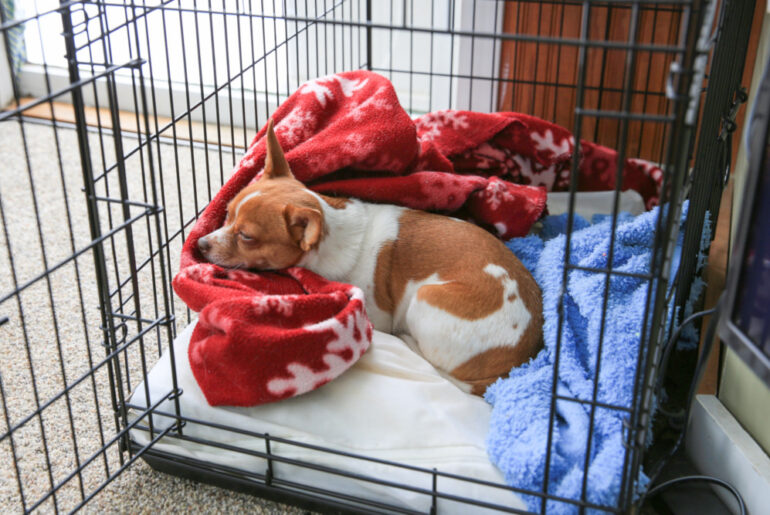Selecting the right size crate for your dog is crucial to ensure their comfort, safety, and well-being. A crate that is too small may be uncomfortable, while one that is too large may not provide the sense of security that dogs often seek in a crate. Here’s a step-by-step guide to help you choose the right size crate for your dog:
- Measure Your Dog:
- Length: Measure your dog from the tip of the nose to the base of the tail. Add 2 to 4 inches to this measurement to determine the appropriate length of the crate.
- Height: Measure your dog from the top of the head to the ground or paw, depending on the breed. Add 2 to 4 inches for the crate height.
- Consider Growth:
- Puppy Growth: If you’re selecting a crate for a puppy, consider the potential size they will reach as an adult. Some crates come with dividers that allow you to adjust the size as your puppy grows.
- Observe Behavior:
- Crate Behavior: Consider how your dog behaves in confined spaces. Some dogs prefer a cozy, den-like environment, while others may feel more comfortable with a bit more space.
- Choose the Right Type of Crate:
- Wire Crates: Provide good ventilation and visibility. Opt for one with a removable divider for growing puppies.
- Plastic Crates: Offer more privacy and are suitable for dogs that prefer a darker, enclosed space. They are also more secure for travel.
- Soft-Sided Crates: Lightweight and portable, these are suitable for well-behaved dogs that don’t chew or scratch excessively.
- Check Weight and Size Recommendations:
- Manufacturer Guidelines: Refer to the manufacturer’s guidelines for weight and size recommendations. These guidelines are usually provided on the packaging or product description.
- Consider Your Dog’s Habits:
- Chewing or Scratching: If your dog has a tendency to chew or scratch, a more durable crate may be necessary. Some materials are sturdier and resistant to chewing.
- Allow Room for Comfort:
- Stand and Turn Around: Your dog should be able to stand up and turn around comfortably in the crate. Ensure there is enough headroom when your dog is sitting or standing.
- Bedding and Essentials:
- Bedding: Consider the space needed for a comfortable bed or blanket. Dogs often appreciate having a soft surface in their crate.
- Water Bowl: If the crate will be used for an extended period, ensure there is space for a water bowl.
- Portability:
- Travel Considerations: If you plan to use the crate for travel, consider the size that will fit in your vehicle. Portable crates should be easy to assemble and disassemble.
- Test the Crate:
- Visit a Pet Store: If possible, visit a pet store and have your dog try out different crates. This can give you a better idea of what size and type your dog prefers.
- Consult with Experts:
- Veterinarian or Trainer: Consult with your veterinarian or a professional dog trainer for advice on selecting the right size crate based on your dog’s specific needs and behavior.
Remember that the crate should be a positive and comfortable space for your dog. If your dog is using the crate for house training, it’s essential that the space is not too large to discourage them from soiling it. By taking these factors into consideration, you can choose a crate that meets your dog’s needs and contributes to their overall well-being.






